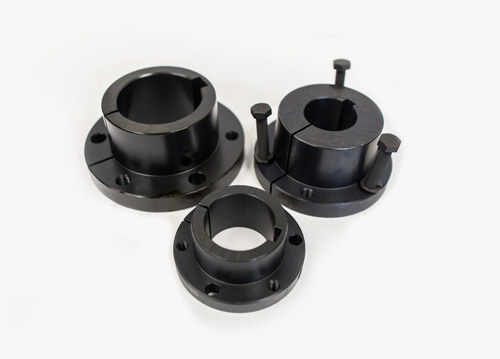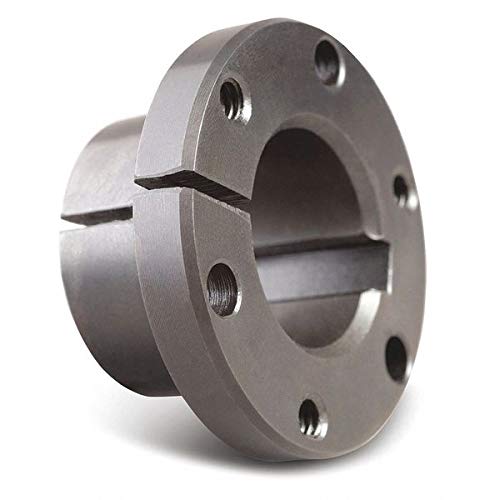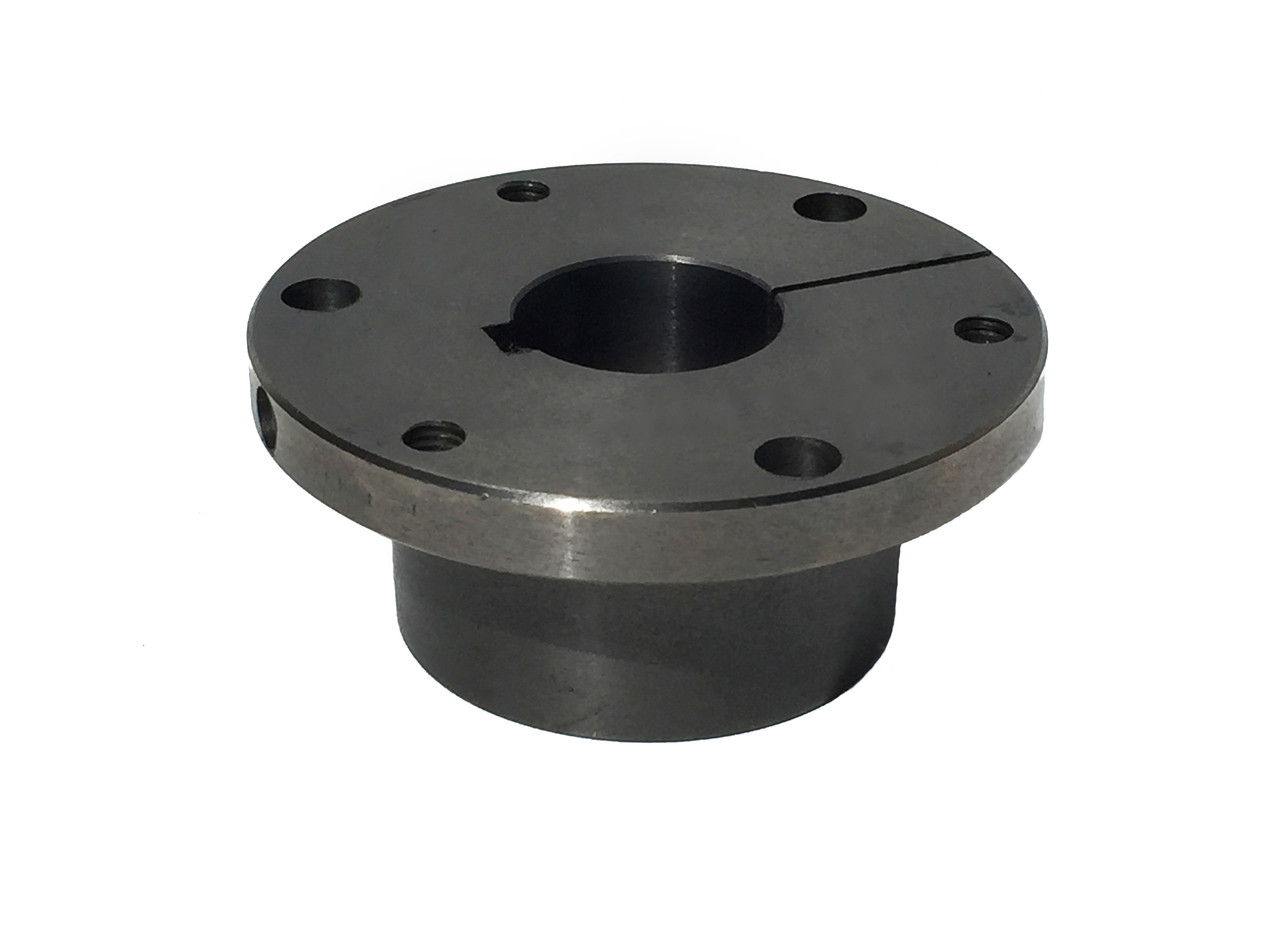
What are the temperature and environmental considerations when using QD bushings?
When using QD (Quick Disconnect) bushings, it is important to take into account temperature and environmental factors to ensure their optimal performance and longevity. Here are some key considerations regarding temperature and environmental conditions:
- Temperature Range: QD bushings are typically designed to operate within specific temperature ranges. It is crucial to understand the temperature limits specified by the manufacturer for the particular type and material of the bushing. Exceeding these temperature limits can lead to premature wear, reduced load capacity, dimensional changes, or even failure of the bushing. Extreme heat or cold can affect the material properties, lubrication, and overall functionality of the bushing.
- Operating Environment: The operating environment plays a significant role in determining the performance and durability of QD bushings. Factors such as moisture, humidity, dust, chemicals, and corrosive substances can impact the bushing’s performance and lifespan. In corrosive environments, it is essential to select bushings made from materials that offer resistance to corrosion or consider additional protective measures such as coatings or seals. Similarly, in dusty or dirty environments, regular cleaning and maintenance are necessary to prevent contaminants from impairing the bushing’s operation.
- Lubrication: Proper lubrication is critical for the smooth operation and longevity of QD bushings. The selection of lubricant should take into account the anticipated temperature range, operating conditions, and the manufacturer’s recommendations. Lubrication helps reduce friction, wear, and heat generation within the bushing, ensuring efficient power transmission and preventing premature failure. Regular lubrication maintenance should be carried out as per the manufacturer’s guidelines.
- Load and Speed: The temperature of QD bushings can be influenced by the magnitude of the applied load and the rotational speed. Higher loads and speeds generate more heat, which can impact the temperature of the bushing and its surrounding components. It is important to consider these factors and select QD bushings that are capable of handling the anticipated loads and speeds within the specified temperature range.
- Vibration and Shock: Excessive vibration and shock can affect the performance and reliability of QD bushings. Vibrations can cause fretting, loosening, or misalignment of the bushing, leading to increased wear and reduced service life. If the application involves significant vibration or shock loads, it is important to select QD bushings that are designed to withstand such conditions or consider additional measures such as using locking compounds or supplementary fasteners to enhance the bushing’s stability.
It is crucial to consult the manufacturer’s documentation, guidelines, and specifications for the specific QD bushings you are using. They will provide detailed information on temperature limits, environmental considerations, and any particular requirements or recommendations for the bushing’s operation and maintenance.
By considering temperature and environmental factors, selecting appropriate materials, ensuring proper lubrication, and addressing specific application requirements, you can maximize the performance and lifespan of QD bushings in your mechanical systems, contributing to their overall reliability and efficiency.

What are the industry standards for QD bushings, and how do they impact their design and performance?
Industry standards play a crucial role in ensuring the quality, compatibility, and performance of QD (Quick Disconnect) bushings. These standards define the specifications, dimensions, tolerances, materials, and testing requirements that QD bushings should meet. Compliance with industry standards helps manufacturers design and produce bushings that are interchangeable, reliable, and suitable for a wide range of applications. Here are some of the key industry standards for QD bushings and their impact on design and performance:
- ANSI/AGMA 9002-B15: This American National Standard, published by the American Gear Manufacturers Association (AGMA), provides guidelines for the design, selection, and use of QD bushings. It specifies the dimensions, tolerances, and key characteristics of QD bushings, ensuring compatibility and interchangeability between different manufacturers. Compliance with this standard ensures that QD bushings meet the necessary requirements for proper fit and performance.
- ISO 9001: The ISO 9001 standard sets the criteria for a quality management system and is applicable to various industries. Manufacturers that adhere to ISO 9001 demonstrate their commitment to quality control and continuous improvement in their processes, including the design and production of QD bushings. Compliance with ISO 9001 ensures that QD bushings are manufactured consistently and meet customer expectations in terms of performance and reliability.
- ISO 9001: The ISO 9001 standard sets the criteria for a quality management system and is applicable to various industries. Manufacturers that adhere to ISO 9001 demonstrate their commitment to quality control and continuous improvement in their processes, including the design and production of QD bushings. Compliance with ISO 9001 ensures that QD bushings are manufactured consistently and meet customer expectations in terms of performance and reliability.
- ASTM F2437: ASTM F2437 is a standard specification for carbon and alloy steel external helical, integral locking teeth, and internal straight thread QD bushings. It provides detailed requirements for the materials, dimensions, hardness, and performance characteristics of QD bushings made from carbon and alloy steel. Compliance with this standard ensures the structural integrity and mechanical properties of QD bushings made from these materials.
- Manufacturer-Specific Standards: Some QD bushing manufacturers may have their own internal standards and specifications that go beyond the industry standards. These manufacturer-specific standards can include additional design features, materials, or performance criteria to meet specific customer requirements or to address unique applications. Manufacturers adhering to their own standards demonstrate their commitment to product excellence and innovation.
The impact of industry standards on QD bushing design and performance is significant. By adhering to these standards, manufacturers ensure that their QD bushings are compatible with other industry-standard components, allowing for interchangeability and ease of integration into various mechanical systems. Designing to these standards also helps optimize the performance and reliability of QD bushings by establishing guidelines for critical factors such as dimensions, tolerances, and material properties.
Industry standards foster consistency and reliability in QD bushing manufacturing, enabling customers to have confidence in the performance and quality of the products they purchase. They also facilitate easier sourcing, replacement, and maintenance of QD bushings since standardized dimensions and specifications allow for direct interchangeability.
It’s important for manufacturers, designers, and end-users to be familiar with the relevant industry standards for QD bushings and ensure that the bushings they select or produce comply with these standards. By doing so, they can ensure proper compatibility, reliable performance, and optimal functionality of QD bushings in their applications.

Where can I find information on the key dimensions of QD bushings for proper compatibility?
Obtaining accurate information on the key dimensions of QD (Quick Disconnect) bushings is crucial for ensuring proper compatibility with shafts and mounted components. Here are some reliable sources where you can find information on the key dimensions of QD bushings:
- Manufacturer’s Catalogs and Websites: Most QD bushing manufacturers provide detailed product catalogs and specifications on their websites. These resources typically include comprehensive information on the dimensions, sizes, and tolerances of their QD bushing offerings. Manufacturer catalogs often contain technical drawings, diagrams, and tables that specify the key dimensions of the bushings. These catalogs can be accessed online or requested directly from the manufacturer.
- Engineering and Industrial Supply Websites: Engineering and industrial supply websites often offer product listings and information for various QD bushing manufacturers. These websites may provide detailed product descriptions, including key dimensions, along with technical specifications. It’s advisable to search for reputable websites that specialize in industrial components and have a wide range of QD bushing options available.
- Technical Support from Manufacturers: If you require specific information or have questions about the key dimensions of QD bushings, contacting the manufacturer’s technical support team can be beneficial. Manufacturers often have dedicated support personnel who can assist you in selecting the appropriate bushing based on your requirements. They can provide guidance on the key dimensions and compatibility considerations, ensuring that you choose the right QD bushing for your application.
- Engineering Handbooks and Reference Materials: Engineering handbooks and reference materials related to power transmission, mechanical components, or industrial equipment may contain general information on QD bushings, including key dimensions. These resources can provide a broader understanding of QD bushings and their compatibility considerations. Libraries, technical bookstores, or online platforms that offer engineering references are good places to look for such materials.
When accessing information on the key dimensions of QD bushings, it is important to consider the specific requirements of your application, such as shaft diameter, torque capacity, and load ratings. Ensure that the dimensions provided by the manufacturer align with your needs and conform to industry standards. If you have any doubts or need further clarification, consulting with an experienced engineer or contacting the manufacturer directly is recommended.
By utilizing these sources, you can access reliable information on the key dimensions of QD bushings, enabling you to make informed decisions and ensure proper compatibility in your mechanical setups.


editor by CX 2024-05-10